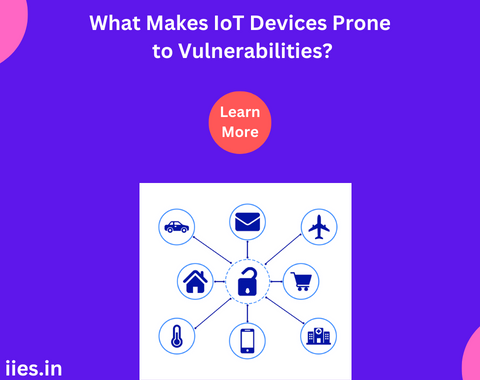
The Internet of Things (IoT) has revolutionized the way we interact with the world, seamlessly integrating smart devices into our daily lives. From smart homes and wearable gadgets to industrial sensors and healthcare devices, IoT technology has brought about unprecedented convenience and efficiency. However, this interconnected web of devices also raises significant concerns about security and privacy. In this article, we will delve into the reasons why IoT devices are vulnerable to various threats, shedding light on the challenges that accompany the benefits of this interconnected world.
As a result, it becomes challenging to enforce uniform security standards across all IoT devices. Some manufacturers prioritize functionality over security, leading to poorly protected devices that become easy targets for cybercriminals seeking to exploit vulnerabilities.
One of the primary reasons why IoT devices are susceptible to vulnerabilities is the sheer number and diversity of devices in use. The ecosystem of IoT encompasses a vast array of devices, each developed by different manufacturers, running various operating systems and utilizing different communication protocols. This heterogeneity creates a fragmented landscape that poses challenges for implementing standardized security measures.
Inadequate Security Measures
IoT devices often enter the market with inadequate security measures, as manufacturers may rush to release products to meet consumer demand. The fast-paced nature of the tech industry can lead to oversight in addressing potential security risks during the development phase. Many IoT devices lack robust security features, such as strong authentication mechanisms, encryption, and secure software updates.
Furthermore, some IoT devices may have default passwords that users fail to change, making them vulnerable to attacks. Insecure communication channels between devices can also expose sensitive data to interception by malicious actors, further highlighting the need for stringent security measures in IoT deployments.
Limited Processing Power and Memory Constraints
To ensure cost-effectiveness and energy efficiency, many IoT devices are designed with limited processing power and memory resources. While this design choice has benefits in terms of device longevity and affordability, it also imposes constraints on implementing robust security measures. Resource-constrained devices may struggle to handle complex encryption algorithms or support advanced security protocols.
Cybercriminals exploit these limitations, as compromised devices with constrained resources are easier to manipulate and control. Inadequate processing power also affects the ability to implement timely security updates, leaving devices exposed to known vulnerabilities for extended periods.
Lack of Standardization
The absence of a standardized framework for IoT security exacerbates the vulnerabilities associated with connected devices. Unlike established industries with well-defined security standards, the IoT landscape lacks a universally accepted set of guidelines and regulations. This absence of standardization creates a challenging environment for manufacturers, developers, and users to navigate.
Without clear and enforceable standards, it becomes challenging to address security concerns consistently across the diverse range of IoT devices. The lack of a unified approach hinders the development of best practices and leaves the door open for security loopholes to be exploited.
Poorly Managed Software Updates
Regular software updates are crucial for maintaining the security of any connected device. Unfortunately, many IoT devices face challenges in implementing effective update mechanisms. Some devices lack the capability to receive and install updates automatically, requiring manual intervention from users. This dependence on end-users introduces the risk of delayed or neglected updates, leaving devices exposed to known vulnerabilities.
Additionally, the lack of standardized update procedures and the absence of a centralized system for managing updates contribute to the overall vulnerability of IoT devices. Cybercriminals often target devices with outdated software, as these present easier targets due to unpatched security flaws.
Insecure Data Storage and Transmission
IoT devices often handle sensitive data, ranging from personal information in smart homes to critical data in industrial settings. The storage and transmission of this data pose significant security challenges.
Moreover, insecure transmission of data between devices or to centralized servers increases the risk of interception and manipulation. Without robust encryption and secure communication protocols, attackers can eavesdrop on data transmissions, compromising the integrity and confidentiality of the information being exchanged.
While the Internet of Things has undoubtedly transformed the way we live and work, it is essential to acknowledge and address the vulnerabilities inherent in this interconnected ecosystem. The proliferation of devices, inadequate security measures, resource constraints, lack of standardization, poorly managed software updates, and insecure data handling collectively contribute to the susceptibility of IoT devices to various threats.
As we continue to embrace the benefits of IoT technology, it is crucial for manufacturers, developers, and regulatory bodies to collaborate on establishing and enforcing robust security standards. Only through a concerted effort to enhance the security posture of IoT devices can we fully harness the potential of this transformative technology while safeguarding the privacy and safety of users.
Indian Institute of Embedded Systems – IIES